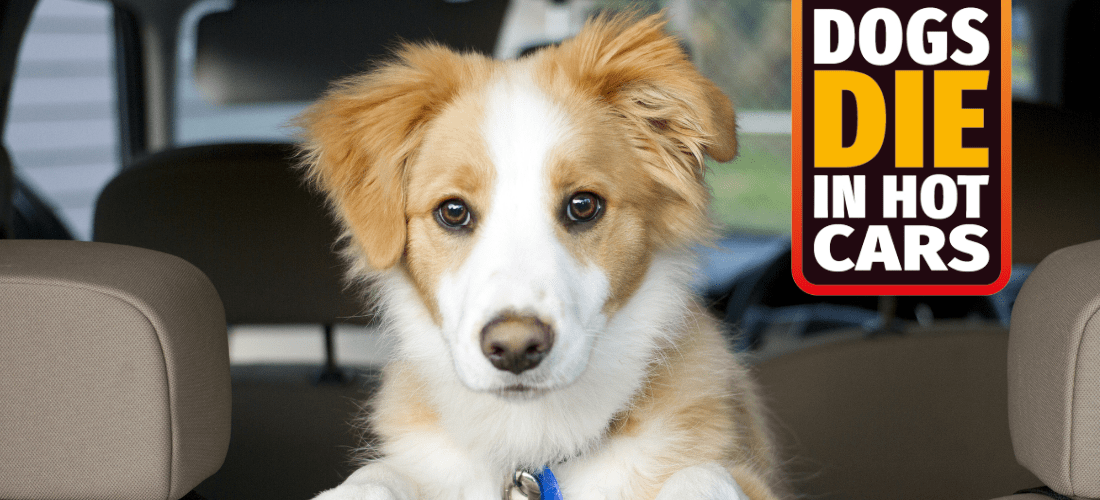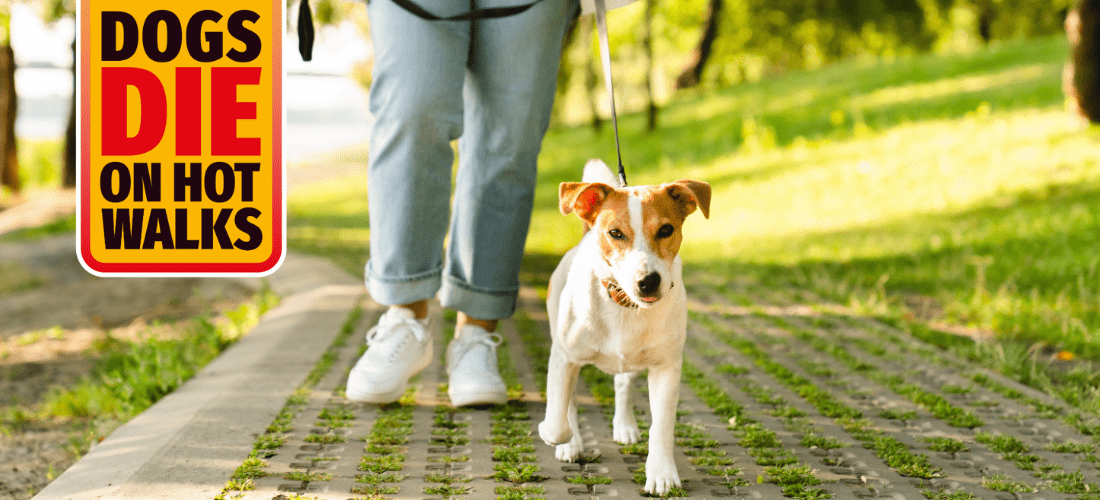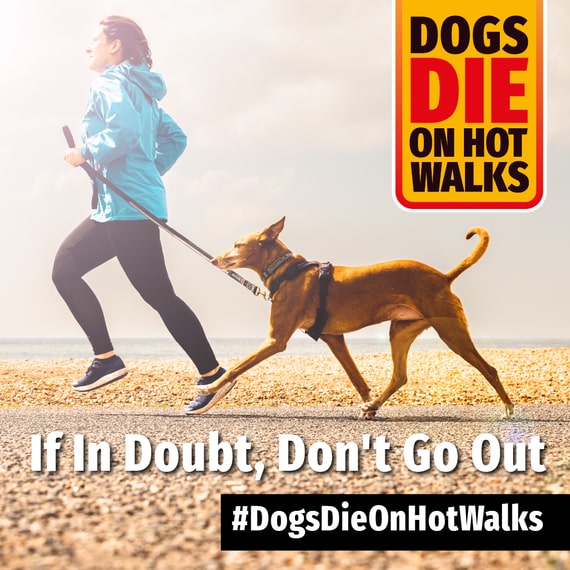Dogs die in hot cars (and on hot walks)
PDSA works closely with other animal welfare organisations to raise awareness of the risks of hot weather to dogs. Every summer when the temperatures rise and the sun comes out, dogs suffer from heatstroke after being left in cars or exercised in hot weather.
Dogs die in hot cars

Dogs should never be left in a car on warm or hot days
Most people believe it’ll never happen to their pet, yet every year dogs continue to die in hot cars. Cars can quickly heat up to dangerously high temperatures, even when it’s not particularly hot outside – for example on a 22°C day the inside of a car can reach an unbearable 47°C within an hour!
Not long is too long
Even cars parked in the shade heat up, and leaving the windows open a crack will not stop the temperature inside the car reaching potentially deadly levels. Don’t gamble with your dog’s life - look for dog friendly days out, or find alternative care for them. Even if you're just popping into the shop for a minute or two, a delay or an unexpected event could lead to tragic consequences – it’s not worth the risk.
Remember – never leave your pets alone in a conservatory, caravan, shed or tent on a warm day - these can also heat up quickly.
What to do if you see a dog in a car on a warm day
Assess the situation - is the dog showing signs of distress or heatstroke?
If the dog appears okay:
- Try to find the owner of the vehicle - if you’re at a shop, supermarket or event, ask a member of staff to make an announcement.
- It might help to try to work out how long the car has been there for – a pay and display parking ticket could give you a clue.
- Take note of the car’s registration number - you may wish to report the incident to the police.
- Stay next to the car and monitor the dog’s condition - if they show signs of heatstroke, dial 999 immediately.
If the dog is showing signs of heatstroke:
- Dial 999 immediately and ask for the police.
- If the situation becomes critical and you feel you have to break into the car to free the dog, first tell the police what you intend to do and take pictures to defend your actions in court if needed - without proper justification, it could be classed as criminal damage.
- Once the dog is free, start first aid for heatstroke and contact the nearest vets.

Dogs die on hot walks

Did you know that every year more dogs suffer from heatstroke due to exercise than from being left in a hot car?
A dog’s excitement on a walk can override their instinct to stay cool, which means sometimes they race around without noticing themselves becoming dangerously hot. For this reason, it’s important for you to keep a very close eye on them, make sure they stay cool, and act quickly if they show any signs of heatstroke.
Early signs of heatstroke:
- Heavy panting
- Excessive drooling
- Stopping on walk or seeming tired
- Confusion
- Foam around the mouth
- Bright red gums
If your dog is showing any signs of heatstroke, start first aid immediately.
If in doubt, don’t go out
When the weather warms up, think carefully about how to exercise your dog safely. Walking in the early mornings and late evenings, when temperatures are cooler is a good start, but if the weather is very hot or humid, it may be safer to miss the walk altogether that day.
If conditions are suitable for a walk, follow our tips to help keep your dog safe:
- Take water for them to drink.
- Shorten your usual route.
- Keep them on the lead so they don’t get too hot racing around.
- Take it slow – a gentle stroll rather than a forced march.
- Take regular breaks for them to sniff, have a drink, and cool down.

Attending outdoor events
In most cases, on warm days you are best to leave your dog behind when attending outdoor events. However, if you need to take them with you, check that the event has shaded areas and water for them, and be prepared to leave early if it heats up.
